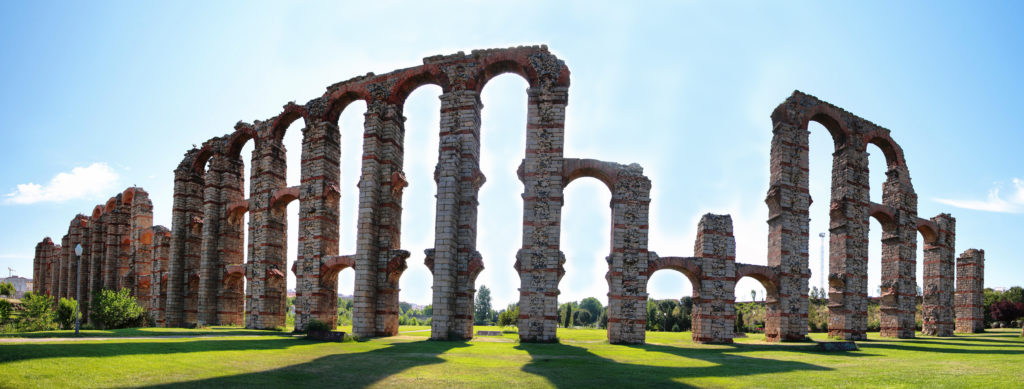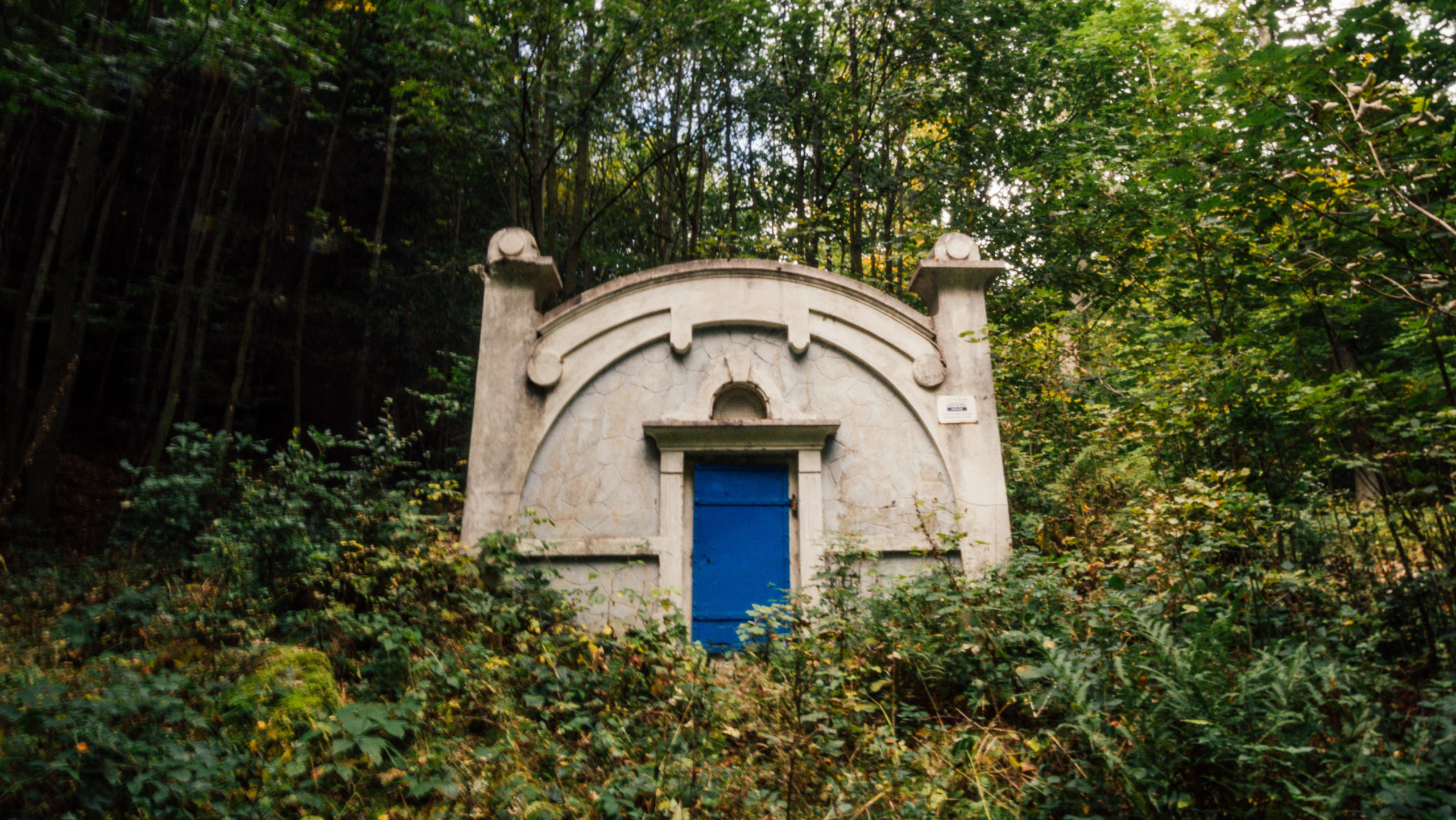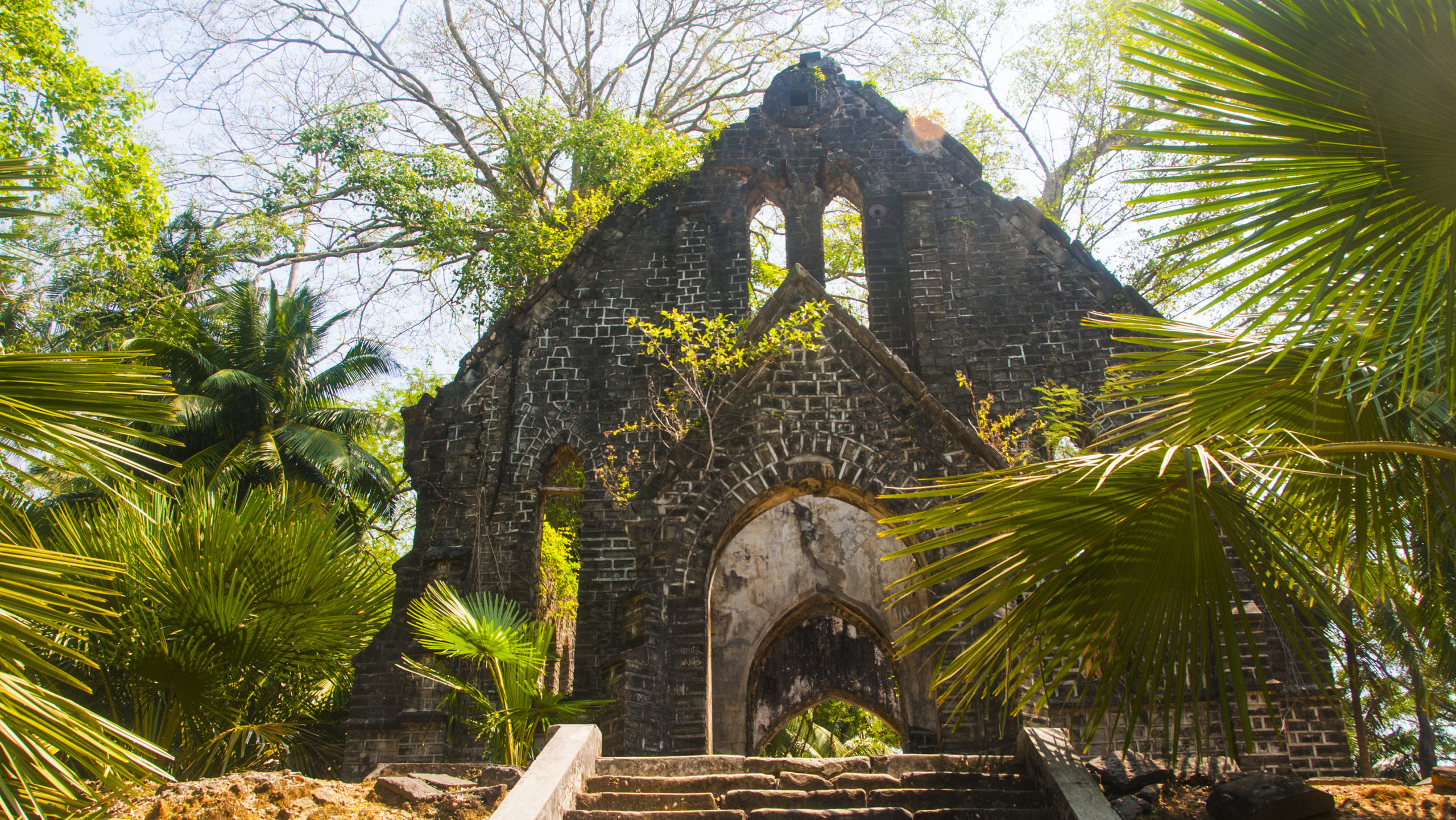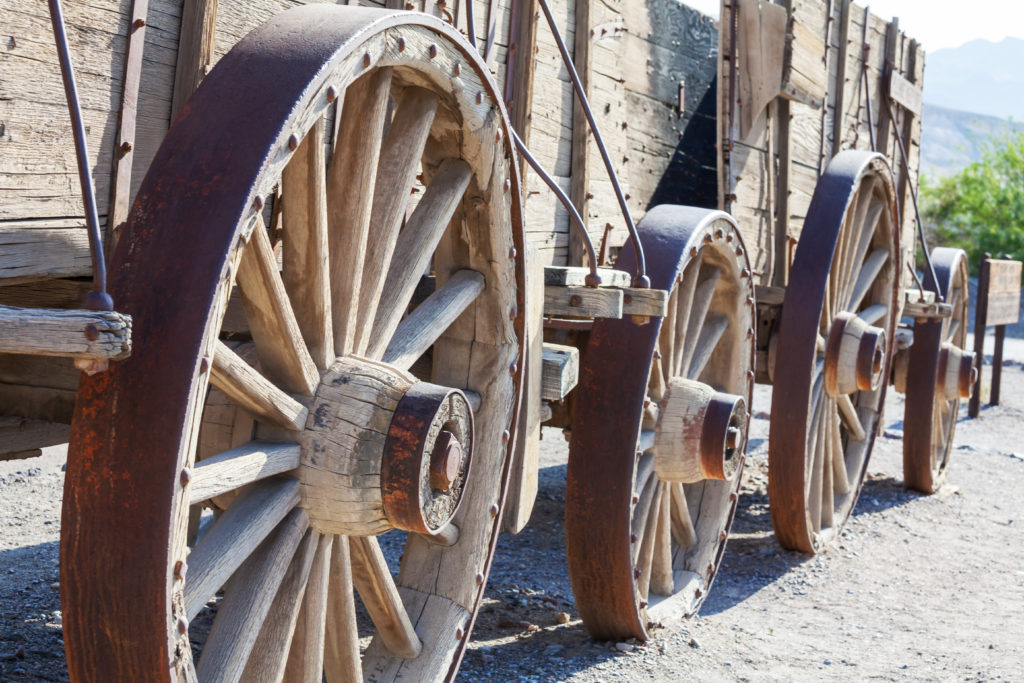What do you get the evil genius in your life that already has everything? Nothing, because they are evil and you should not support that. And, as we established, they already have everything – including a garden full of Historic Detritus. What is the difference between a collectible item and historic detritus? The former would be a royal banner. The latter would be a piece of castle wall with a pole on which that banner flew when the monarchy fell.
Historic Detritus describes larger items, usually architecture, that have been lifted from elsewhere to be placed into a location where their new owner can saunter among them. Their purpose is more to praise their new owner than to preserve history. Or maybe their collection serves as another layer of security, a set of traps for adventurers, hidden in plain sight. That use case will feature in an upcoming article, so stay tuned for that.
How to Create Historic Detritus
A piece of Historic Detritus should fill a small clearing, a plot of land with a diameter of somewhere between 5 and 15 meters. Just large enough to contain a recognizable helping of architecture. It is perfectly okay for it to look out of place, mainly because it would be. It might be laid out to be walked around or, if the particular item of interest allows it, to be walked through.
Below, you will find detailed information on what this particular structure could look like, what it could have been and what it might be good for now. Just keep in mind that not every combination of dice rolls makes sense. You are free to reroll if something odd comes up, or just accept it as a historical quirk and roll with it.
In Advance or On-the-fly?
At first, I wanted to create a set of tables that would allow you to create something with a few die rolls (akin to the Potion Ingredients 101). The more I pondered the concept, the more I became convinced that it would not be as easy as rolling for a few characteristics. Instead, I recommend rolling or picking in advance, and substituting anything that does not “feel right”.
Different Types of Structures
Any historic detritus starts with a base type. This describes its function more than its form, even though there are some basic shapes that go with a certain structure. Keep in mind that detritus can also be a fragment of a building, harvested either after the original was laid to waste, or through some cunning form of architectural heist.
| d12 | Historic Detritus – Type of Structure |
| 1 | Place of Worship, something dedicated to a deity or powerful entity (temple, shrine, altar) |
| 2 | Place of Passage, something that allowed travel from one space to another (gate, archway, entrance) |
| 3 | Support Structure, something that held up something else (buttress, pillar, cornerstone) |
| 4 | Place of Death, something used in the treatment and remembrance of the dead (sarcophagus, graveyard) |
| 5 | Place of Remembering, something created to commemorate a person’s deeds (plaque, obelisk, statue) |
| 6 | Place of Tallness, something that is higher than wide, often used as vantage point (tower, spire, lighthouse) |
| 7 | Place of Warfare, something that took part in violent conflict of some sort (war room, camp, ruins) |
| 8 | Living Space, something that was used as an abode of sorts (cabin, cottage, cave) |
| 9 | Place of Science, something where knowledge was kept or enhanced (laboratory, school, library) |
| 10 | Seat of Power, something linked to any kind of ruler or noble (throne, crest, banner) |
| 11 | Landmark, something naturally occurring that has seen some things (mountaintop, spring, tree) |
| 12 | Magic, something permanently marked by tremendous use of arcane energies |
Only roll twice if you are feeling architecturally brave.
Optional: Base Material
Different cultures use different building materials, and so do different periods or locations. This one is optional because you might already have something in mind for the structure you are designing. However, if you want something more random and possibly fancy, feel free to roll on this table and see if you like the result.
| d12 | Historic Detritus – Base Material |
| 1 | softwood; more resinous, light brown or grey |
| 2 | hardwood; darker in color, more heavy in grain |
| 3 | granite; uniform grey stone, pretty sturdy |
| 4 | sandstone; coarser texture, more easily worked |
| 5 | marble; beautiful swirl pattern, very rigid |
| 6 | bricks; come in different shapes and sizes |
| 7 | clay; very natural material, usually requires support |
| 8 | metal; can be put into different shapes, very sturdy |
| 9 | precious metal; generally less sturdy but big pretty |
| 10 | glass; easy to shatter, can be transparent, refracts light |
| 11 | crystal; hard to shape, translucent, different colors |
| 12 | bones; come in different sizes, may need supports |
Rolling multiple times can work but more than twice
might give an architect somewhere a headache.
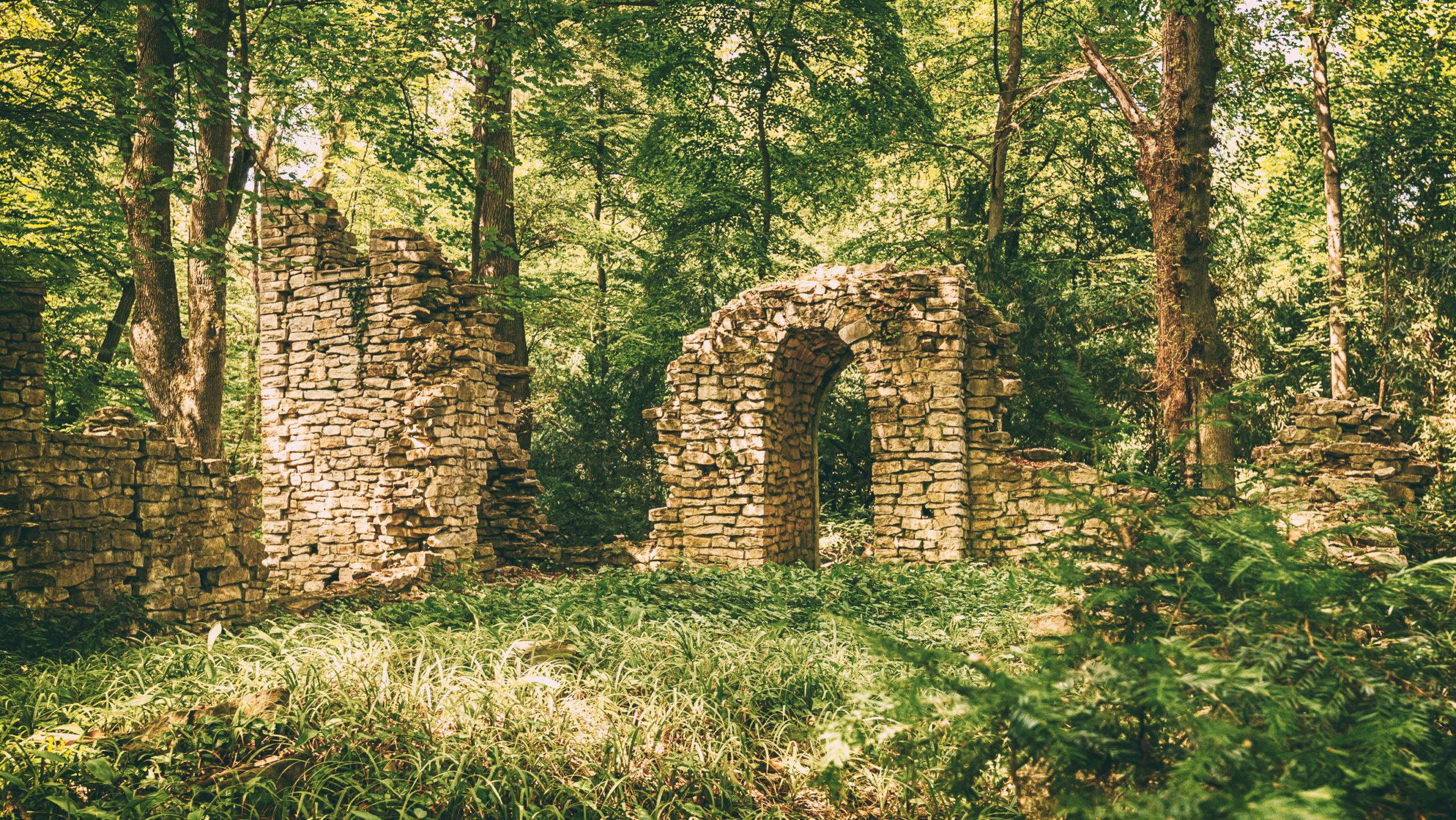
Non-Vital Architecture
While a structure’s intended use informs most of the design decisions that went into it, there is a lot of room for artistic freedom when it comes to actually building the thing. Here you can find a list of stylistic details and small decorative elements that can give your piece of historic detritus a certain feel.
| d12 | Historic Detritus – Additional Architecture |
| 1 | every surface as smooth as possible |
| 2 | complex handmade texture on every surface |
| 3 | small claw-like outcroppings everywhere |
| 4 | miniature turret-like decoration |
| 5 | flowing curves along the edges |
| 6 | blade-like edges, sharp enough to cut |
| 7 | chamfers and roundovers everywhere |
| 8 | geometric flexing, simple shapes are a no-go |
| 9 | edge-banding in a different material |
| 10 | sitting and lounging opportunities wherever possible |
| 11 | engraved with complex writing, runes, and dedications |
| 12 | complex murals on every surface |
Rolling multiple times adds to the eccentricity of the original builder.

Where it came from
While it may not be the reason why a bit of detritus is interesting, its origin definitely informs a lot about its appearance and what makes it historic. This can lead to a bit of circular reasoning – you just rolled a structure and some material(s). Now you might get an origin that is hard to reconcile with that.
In such a case, you have two options. Either go back and adapt the materials to the origin, or find a creative and, if possible, weird explanation for why this particular structure stood where it stood before it was taken. Either way, do not let one roll or two diminish your fun with historic detritus. Pick what feels right and everything should be okay.
| d12 | Historic Detritus – Origins |
| 1 | a rural temperate town |
| 2 | a desert oasis |
| 3 | an overgrown jungle |
| 4 | a well-guarded mountaintop keep |
| 5 | a brackish moor |
| 6 | a deep cave system |
| 7 | an archipelago settlement |
| 8 | a mirror world to the material |
| 9 | a slightly out of sync parallel world |
| 10 | another plane of existence |
| 11 | a celestial domain |
| 12 | a drifting pocket dimension |
Roll twice to combine elements.
Why is it so cool to have?
Some things are without question and outright cool. There is no way that anyone with half a chance would not want to possess them. This could be a shrine made of glowing crystal or the sentient cosmic projectile that destroyed the cathedral of the sun god. Okay, I admit, maybe there are good reasons not to want those things in your back yard. But you are not a megalomaniac genius of any kind, right?
There is a reason for every piece of historic detritus to end up in a private collection. From very personal ones, like a deep adoration for a particular scholar that leads to stealing their thinking cottage, to more general motivations, like having the bigger fiendish lookout from the hells than your neighbor, there is always something that sparks the desire to possess a bit of history.
| d12 | Historic Detritus – Reason |
| 1 | A historic figure spent a lot of time there, living or working |
| 2 | A historic event was planned or orchestrated from or near it |
| 3 | It survived an important event |
| 4 | It was destroyed/wrecked by a historic figure |
| 5 | It was destroyed/wrecked in an important event |
| 6 | It played a pivotal role in a war or conflict |
| 7 | It was marked by intentional magic |
| 8 | It was marked by unintentional/cataclysmic magic |
| 9 | It was taken to another plane by external forces |
| 10 | It witnessed severe destruction or death |
| 11 | It survived a natural disaster |
| 12 | It survived a cosmic disaster |
Rolling multiple times can make things weird.
Go for it.
How was it repossessed?
A piece of historic detritus should be interesting in its own right. However, the real adventure begins when it makes its way to its new destination. Granted, it can be as mundane as walking up to the owner and asking, possibly paying a measly sum, then literally carting it off. With a cart. But it can also be so much more interesting than that.
If whatever the table provides sparks an idea, you should roll with it. It might even become more infamous than the detritus itself. There is also the option that tales of a near-impossible heist make the rounds in local taverns. Bards would be prone to flesh out the sparse details known about how a local landmark was stolen and nobody knows who was behind it.
I recommend rolling twice on the table to combine different methods of ownership and transportation. Most of them beg to be expanded upon, and you should do so. Alternatively, the players’ investigation will turn up interesting ideas that you can include into the detritus’ lore after the fact.
| d12 | Historic Detritus – Obtaining |
| 1 | It was given for free – and taken in pieces by donkey cart. |
| 2 | It was given as payment – and hauled off by a gathering of strong individuals. |
| 3 | It was taken as collateral – and the new owner moved in next to it. |
| 4 | It was given in exchange for a favor – and carried away by earth elementals. |
| 5 | It was wished for from a spirit – and went up in flames to appear at its destination. |
| 6 | It was obtained through blackmail – and transported by a giant eagle. |
| 7 | It was stolen when the owner was away – and dragged by dire horses. |
| 8 | It was taken in a proper heist – and carried in a number of small pockets. |
| 9 | It was bargained for with a demon lord – and came on a river of churning blood. |
| 10 | It was bestowed by a deity – and placed by celestials. |
| 11 | It was taken without warning – and moved with a high magic teleport spell |
| 12 | It was taken under false pretenses – and transported using planar crystals. |
Combine a way to ownership and a method by rolling twice.
Rather than rolling multiple times you should pick what thrills you!
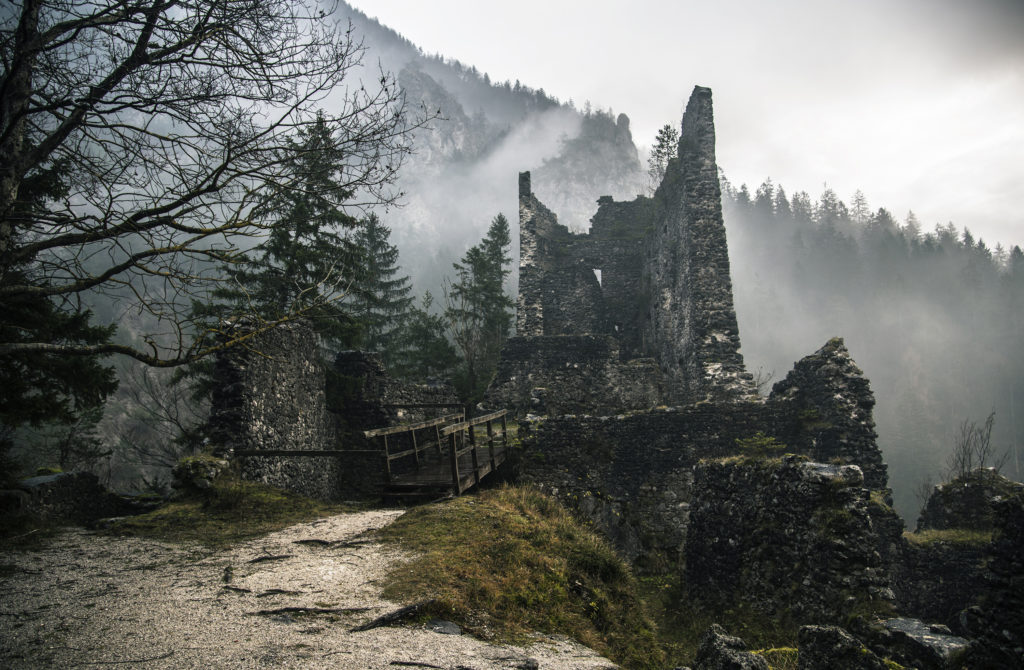
Outro
I hope the ideas and tables provided here will inspire you. There might be a sequel to this at some point, but until then, you can check out the other roleplaying inspiration here on my site.
Thanks for stopping by, and remember to Be Inspired!
